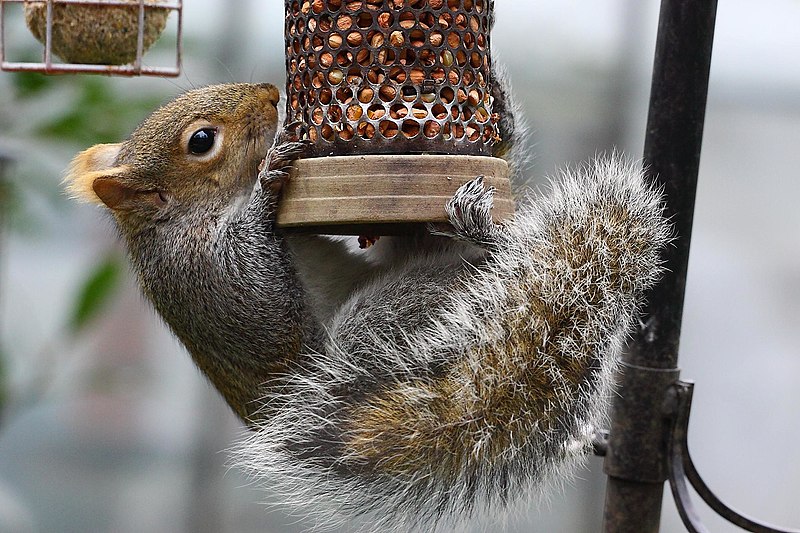“Simple DIY solutions like homemade repellents, fencing, and regular yard maintenance can go a long way in keeping wildlife out of your yard.”
Finding a wild animal in your yard can be unsettling, especially if it’s unexpected. Whether it’s a raccoon, snake, or even a deer, it’s important to handle the situation with caution and care. While your first instinct may be to approach or scare the animal away, keeping a safe distance is essential for both your safety and the animal’s well-being.
Wild animals may be lost, searching for food, or looking for a place to nest, and improper handling could lead to injury or legal trouble. Knowing what steps to take when encountering wildlife in your yard ensures that the situation is resolved safely and humanely.
Stay Calm: Immediate Steps to Take
Assess the Situation from a Safe Distance
The first thing to do when you spot a wild animal in your yard is to remain calm and observe it from a safe distance. Avoid approaching the animal, as this could startle it and cause it to behave unpredictably. Use binoculars if necessary to get a closer look without getting too close. Determine whether the animal appears to be hurt, aggressive, or simply passing through. Understanding the animal’s behavior can help you decide the best course of action.
Avoid Direct Interaction
Even if the animal looks harmless or injured, it’s important not to approach or touch it. Wild animals can carry diseases like rabies or parasites, and even a typically docile creature can become aggressive if it feels threatened. Keep children and pets indoors and maintain a safe distance until the animal moves on or help arrives. Attempting to handle the situation yourself can put you at risk of injury.
Observe for Signs of Danger or Aggression
Some wild animals may exhibit signs of aggression or illness, such as growling, foaming at the mouth, or erratic behavior. If the animal shows any of these warning signs, it’s important to retreat to a safe location immediately and avoid any interaction. Aggressive behavior or abnormal movement can be a sign of rabies or other diseases, and professional assistance is required in these cases.
When to Call a Wildlife Removal Company
The Animal Shows No Signs of Leaving
If the wild animal in your yard seems comfortable and shows no sign of leaving, it may be looking for food, shelter, or a nesting spot. In this case, it’s important to contact a wildlife removal company, especially if the animal could pose a risk to your home or family. Wildlife removal professionals can safely and humanely relocate the animal without causing harm or stress to it or anyone nearby.
The Animal Appears Injured or Sick
If the animal looks injured, sick, or is behaving erratically (such as stumbling, foaming at the mouth, or being unusually aggressive), it’s crucial to avoid any direct contact and call a wildlife removal expert immediately. These professionals are trained to handle animals that may be diseased or injured and can transport them to rehabilitation centers or wildlife shelters if necessary. Attempting to help a sick or injured animal yourself could result in injury or expose you to harmful diseases.
There Is a Risk to Your Property
Sometimes, wildlife can cause significant damage to your property if left unattended. Animals such as raccoons, squirrels, or even deer can tear up gardens, damage fences, or seek entry into attics and crawl spaces. If you notice any signs of damage or the animal seems intent on staying, it’s time to bring in the experts. Wildlife removal services can prevent further damage by safely capturing and relocating the animal before it causes more problems.
Preventing Wildlife from Returning to Your Yard
Secure Food Sources
One of the primary reasons wildlife enters residential yards is the availability of food. To prevent animals from returning, make sure all trash bins have tight-fitting lids and are stored securely. Avoid leaving pet food outside, and clean up any birdseed or fallen fruit from trees. If you have a garden, consider installing fencing or netting to protect it from foraging wildlife. By eliminating easy access to food, you make your yard far less appealing to animals looking for a meal.
Seal Entry Points
Inspect your yard and home for potential entry points that wildlife could use to access your property. This includes gaps in fences, holes under sheds or decks, or any openings around your home’s foundation. Sealing these areas with durable materials like wire mesh or hardware cloth will prevent animals from burrowing or squeezing their way into your yard. If necessary, consider reinforcing vulnerable areas with additional barriers.
Modify Landscaping
Wildlife often uses overgrown bushes, tall grass, and low-hanging tree branches as shelter or as a way to access your yard. Regularly trim trees and bushes to limit easy pathways into your yard. Keep your lawn well-maintained and consider planting wildlife-resistant vegetation that doesn’t attract foraging animals. Removing hiding spots and access routes will make your yard less appealing to wildlife seeking shelter.
Install Motion-Activated Deterrents
Motion-activated lights, sprinklers, or noise devices can be highly effective in deterring wildlife from entering your yard. When animals trigger the sensors, the sudden light, water, or sound can scare them away without causing harm. These deterrents are particularly useful at night when wildlife activity is most common. Consistently using these devices can help condition animals to avoid your property.
DIY Tips to Prevent Wildlife from Returning
- Homemade Repellents– You can create simple, natural repellents to deter animals from returning to your yard. For example, mixing water with hot pepper flakes or garlic and spraying it around the perimeter of your yard can help keep animals at bay. Similarly, placing cotton balls soaked in vinegar or peppermint oil near common entry points can repel wildlife due to their strong scents.
- DIY Fencing Solutions– If professional fencing isn’t an option, you can use DIY materials to protect vulnerable areas of your yard. Chicken wire or hardware cloth can be easily installed around gardens, under decks, or around sheds to prevent burrowing animals like rabbits or skunks from gaining access. These inexpensive solutions are effective in blocking wildlife while allowing you to maintain control over your yard.
- Homemade Motion Deterrents– Create simple motion-activated deterrents using household items. For instance, hanging aluminum foil strips or old CDs from tree branches can create reflections that scare off birds and smaller animals. Similarly, wind chimes or plastic bags attached to posts can make noise and movement that startles animals, encouraging them to avoid your yard.
- Yard Maintenance as a DIY Project– Regular yard maintenance can be an easy DIY way to prevent wildlife from taking over. Keep your grass trimmed, rake up leaves, and remove piles of debris where animals could hide. By keeping your yard clean and tidy, you make it less attractive to animals looking for shelter or nesting spots.
AAAC Wildlife Removal’s Process for Yard Wildlife Removal
When you contact AAAC Wildlife Removal for assistance with a wild animal in your yard, their team follows a careful and humane process to resolve the situation. The first step is a thorough assessment of the property to identify the type of animal and the extent of the issue. Their trained professionals observe the animal’s behavior, determine how it entered the yard, and assess any potential risks to your home or family.
Once the assessment is complete, AAAC Wildlife Removal uses humane techniques to capture and relocate the animal. They prioritize the well-being of both the wildlife and your family, employing safe traps or exclusion devices depending on the species. After removing the animal, they also inspect the property for potential entry points or attractants, such as food sources or shelter spots, that may have drawn the animal in. The team offers solutions to prevent future wildlife issues, ensuring your yard remains safe and wildlife-free.




